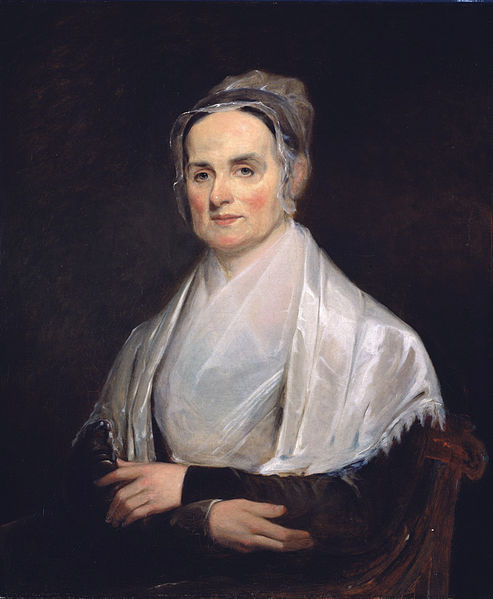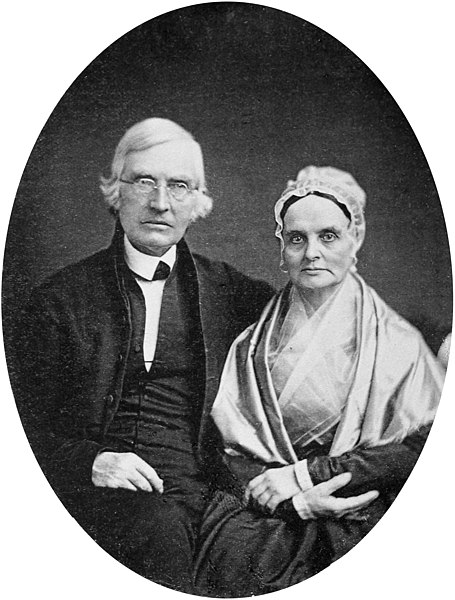Lucretia Mott was an American Quaker, abolitionist, women's rights activist, and social reformer. She had formed the idea of reforming the position of women in society when she was amongst the women excluded from the World Anti-Slavery Convention held in London in 1840. In 1848, she was invited by Jane Hunt to a meeting that led to the first public gathering about women's rights, the Seneca Falls Convention, during which the Declaration of Sentiments was written.
Lucretia Mott, at 49 years old (1842), at the National Portrait Gallery in Washington, D.C.
James and Lucretia Mott, 1842
Philadelphia Female Anti-Slavery Society, N 5th & Arch Streets, Philadelphia, Pennsylvania
Sculptor Lloyd Lillie's "The First Wave" statues in the Women's Rights National Historical Park Visitor Center. On the far left are Elizabeth Cady Stanton and Frederick Douglass (with Lucretia Mott and James Mott not visible behind them); of the two women in the front, the one on the right is Martha Coffin Wright; the man and woman standing together in the rear are Thomas M'Clintock and Mary Ann M'Clintock. The others are unidentified.
Reformism is a type of social movement that aims to bring a social or also a political system closer to the community's ideal. A reform movement is distinguished from more radical social movements such as revolutionary movements which reject those old ideals, in that the ideas are often grounded in liberalism, although they may be rooted in socialist or religious concepts. Some rely on personal transformation; others rely on small collectives, such as Mahatma Gandhi's spinning wheel and the self-sustaining village economy, as a mode of social change. Reactionary movements, which can arise against any of these, attempt to put things back the way they were before any successes the new reform movement(s) enjoyed, or to prevent any such successes.
Chartist meeting, Kennington Common, 1848
Mary Wollstonecraft
A Vindication of the Rights of Woman, 1792
Charles Grey, 2nd Earl Grey Monument in Newcastle upon Tyne








